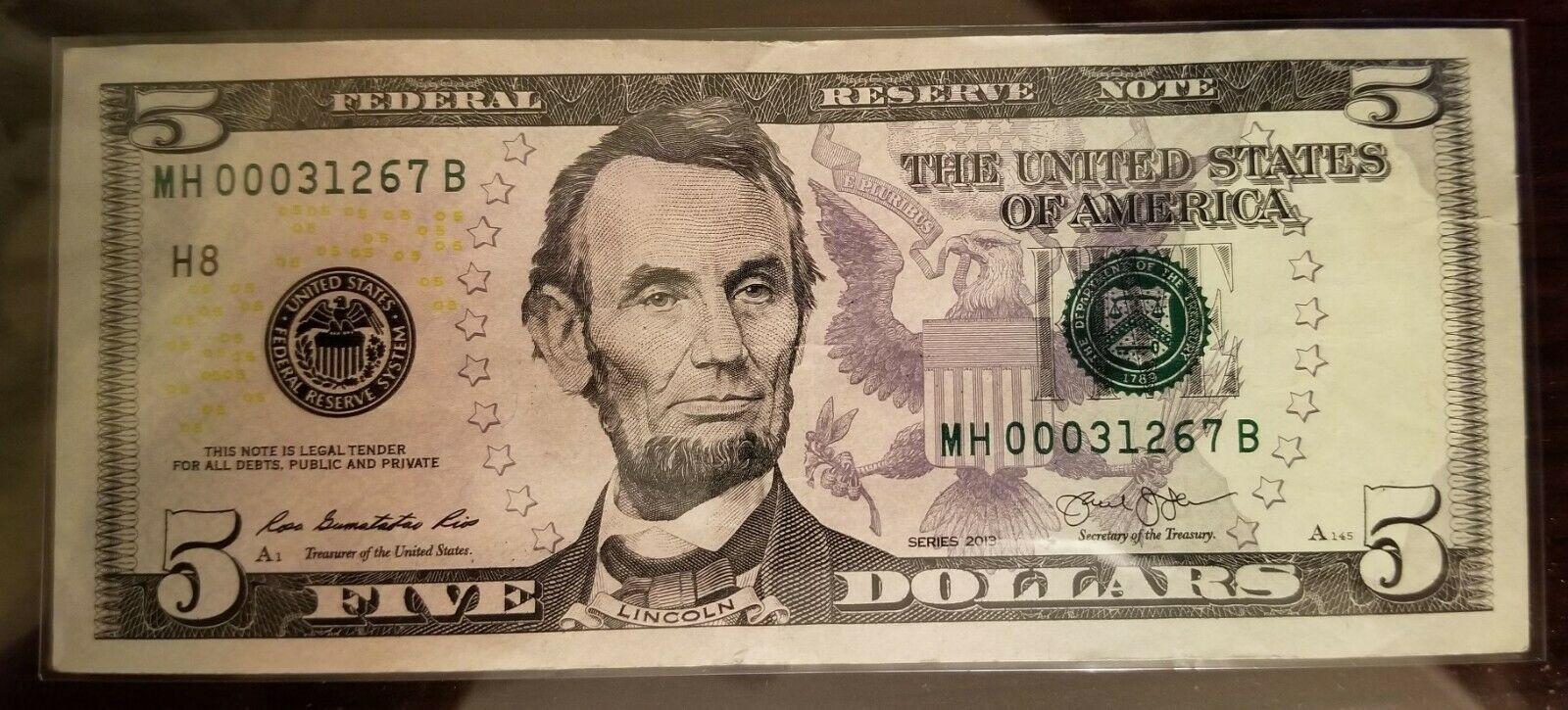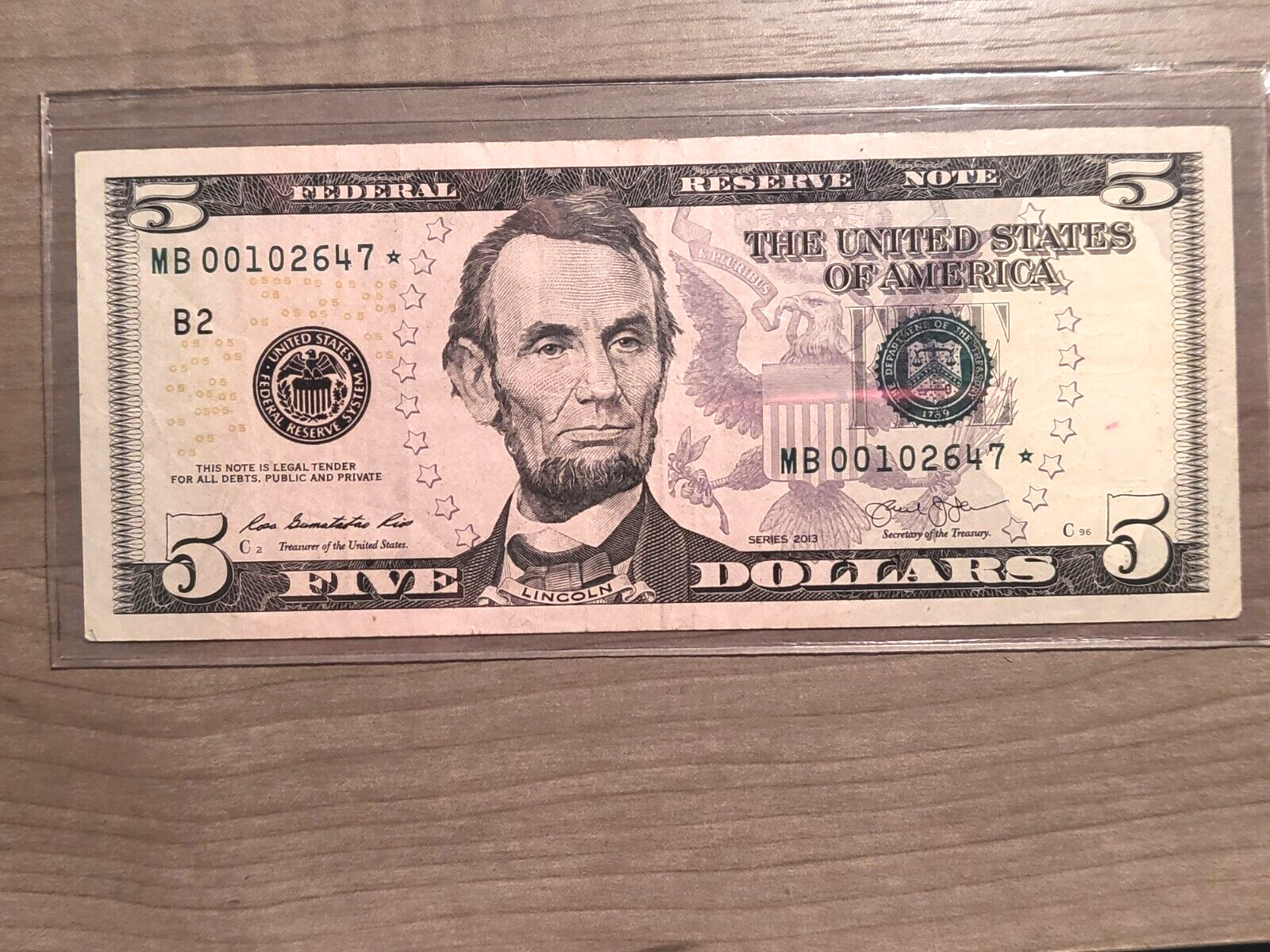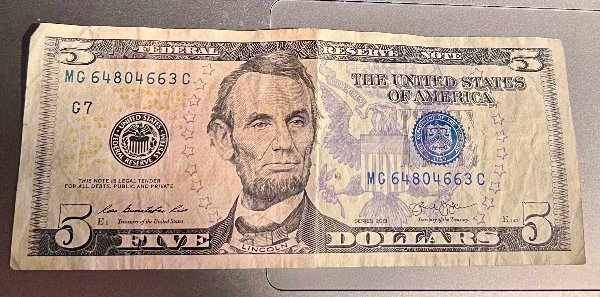When you hold a 2013 5 dollar bill in your hand, you might wonder, “What is its value?” The 2013 five dollar bill is part of the modern currency series of Federal Reserve Notes and remains in circulation today. Most of these bills are worth exactly $5—its face value—but some special versions, particularly the star notes, can fetch a premium in the collector’s market.
This article will guide you through understanding the 2013 5 dollar bill value, its special features, and factors that influence its worth, including error notes and series-related features.
So, let’s dive in and explore everything about the 2013 5 dollar bill value.
Overview Of The 2013 Five Dollar Bill
The 2013 $5 bill is a part of the U.S. currency that is issued as a Federal Reserve Note. This bill is commonly used in daily transactions and has similar features to its earlier counterparts, with a few distinct security upgrades.

Specifications of the 2013 $5 bill:
- Denomination: $5.00 USD
- Type: Federal Reserve Note
- Signature Combinations: One – Rios and Lew
- Series: 2013
For the majority of individuals holding this bill, it will only be worth face value. It is still a circulating note and, as such, doesn’t carry an intrinsic value beyond what it can buy in goods and services today. However, some bills with specific features—such as star notes or rare errors—can increase in value.
How Much Is The 2013 $5 Bill Worth?
For the most part, the 2013 five dollar bill will be worth just its face value, i.e., $5. However, its value may vary depending on its condition, the presence of unique features, and whether it’s part of a rare group like star notes or those with printing errors.
In terms of purchasing power, $5 in 2013 has a slightly different value compared to its equivalent today. According to inflation calculations, $5 in 2013 is worth around $6.77 in today’s dollars. This means there has been an increase of $1.77 due to inflation over the course of 12 years.
The average inflation rate between 2013 and today has been approximately 2.56% annually, making the cumulative price increase about 35.48%.
As for everyday use, this bill is still the same $5 currency it was when first issued, but if you’re holding onto it as a collector, its worth can potentially grow.
The Influence of Star Notes on 2013 $5 Bill Value
One of the most significant factors in determining the 2013 $5 bill’s value beyond face value is the star note. Star notes are replacement bills printed by the Federal Reserve to replace notes that were damaged during production.
These notes are marked with a star symbol at the end of the serial number, making them easily identifiable.
While the majority of star notes for the 2013 $5 bill are still worth around their face value of $5, some specific notes, especially those from certain Federal Reserve banks, can be worth much more.
For example:
The 2013 $5 star note from the Federal Reserve Bank of Boston can be worth about $20 in uncirculated condition, graded at MS 63.
The 2013 $5 star note from the Federal Reserve Bank of San Francisco also fetches approximately $20 in uncirculated condition, similarly graded at MS 63.
Grading is a crucial factor when determining the value of these bills. MS 63 (Mint State 63) means the bill is in choice uncirculated condition, which means it shows no signs of circulation and retains its original crispness.
Notes graded at MS 63 or higher are in high demand among collectors, which explains the premium value these star notes can command.
How To Identify a Star Note on a 2013 $5 Bill
To confirm if you have a star note, simply look for the star symbol at the end of the serial number. This symbol is located at the far right of the serial number and is used to denote that the bill was a replacement note.

Furthermore, star notes are rarer and thus more desirable, which is why they can be worth more than regular bills of the same denomination.
If you happen to find a star note in good condition, it may be worth more than $5, especially if it comes from a low print run or a specific Federal Reserve district.
Errors and Misprints: Factors That Can Affect the Value of a $5 Bill
Errors and misprints also play an important role in determining the 5 dollar bill’s worth. A variety of error bills can surface, and depending on the nature and rarity of the error, these bills can command significant premiums.
Common error types include:
- Misaligned prints: This happens when the ink is printed off-center, making the design look crooked or uneven.
- Overprints or underprints: Sometimes, additional images or numbers appear where they shouldn’t, making the note unique.
- Missing elements: Occasionally, certain security features, like the embedded security thread or microprinting, might be missing, making the bill an error note.
While most printing errors do not add much value to a $5 bill, some rare ones can increase its worth dramatically. It’s essential to consult with a professional currency dealer if you believe you have a rare error note.
The Grading System for 2013 $5 Bills
Grading is a process that evaluates the condition of a bill, and it plays a major role in determining its value.
The better the condition, the higher the bill’s value—this is true for both regular five dollar bills and those with special features such as star notes or errors.
Here’s a quick guide to understanding some of the most common grades:
- Uncirculated: This means the bill has never been used in circulation. It looks fresh and crisp, often with no creases or folds.
- Choice Uncirculated (MS 63): A bill in excellent condition, with no signs of circulation, but may have slight imperfections.
- Circulated: This category includes bills that have been in circulation and show signs of use, like creases or wear.
How Can You Tell if a 2013 $5 Bill is Real?
It’s essential to ensure that your 2013 five dollar bill is legitimate. The U.S. Treasury has designed a variety of security features to prevent counterfeiting.

To authenticate your bill, here’s what you can do:
- Look for the security thread: Hold the bill up to the light to see a vertical security thread embedded to the right of the portrait. The thread will display the letters USA and the number 5 in an alternating pattern. When illuminated with UV light, it will glow blue.
- Feel the texture: Real currency has a unique texture, unlike regular paper. It’s made from cotton and linen and feels different from regular paper.
- Check the portrait and details: The fine lines and features on the portrait should be sharp and clear. If the bill feels too smooth or has blurry details, it could be counterfeit.
Conclusion: 2013 5 Dollar Bill Value Today
The 2013 5 dollar bill primarily holds its face value, $5, for everyday transactions. However, certain features such as star notes or error bills can increase its worth to a collector. If you are holding onto a star note, an error bill, or simply a bill in excellent condition, it may fetch a higher value than its face amount.
Always keep in mind that the bill’s series, condition, and unique features play a huge role in determining its market value.
If you own any of these notes or are simply interested in the 2013 $5 bill, make sure to check for star notes, misprints, or grading status. And when it comes to checking for authenticity, be sure to use the security features provided by the Treasury.
You’re simply curious or looking to sell a rare note, understanding the factors that affect the 2013 five dollar bill’s value is essential for any currency collector.
If you’re wondering about the 2013 5 dollar bill value, be sure to examine its unique features—whether it’s a star note, an error, or in excellent condition—to get an accurate idea of its potential worth.
